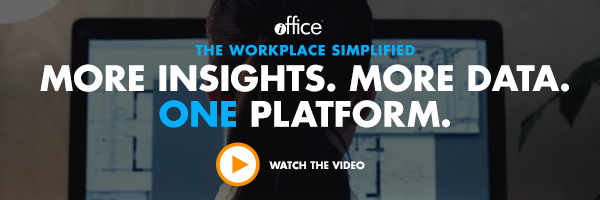Technology Builds a Solid Foundation for Tracking Your Company’s Space


Managing a business’ spatial assets has become more than just knowing where and when office spaces are being occupied. Metrics, such as the amount of people in attendance, the times when the space is being used, and the manner in which it is being utilized were once considered enough information for managers to work with. But, with expanded technologies and offices being built or renovated with these technologies in mind, FM Leaders and C-suite are able to track and gather data that is exponentially more specific. No longer is usage simply being tracked by assigned location or task, but on actual usage, even down to individual power consumption to the second. Maintaining an office space represents one of the biggest expenses for many organizations – the ability to examine all cost factors in micro managerial terms, companies are able to find savings in numerous areas and, when compiled, result in greater reductions in the bottom line. Is your company truly examining the cost of space usage and, if not, exploring how you can get started?
A Strong Foundation – A Multi-faceted Term
Simply by virtue of creating a strong tech foundation, many of the spatial issues modern businesses are  confronted with can be avoided or reduced. The phrase tech foundation, though, can have more than one meaning and importance to modern businesses and organizations.
confronted with can be avoided or reduced. The phrase tech foundation, though, can have more than one meaning and importance to modern businesses and organizations.
For London based company Ustwo, this meant literally building a technological infrastructure. By installing a state of the art system during their building remodel, they are now able to measure space and energy consumption down to the minute level. They are able to track how much electricity every device in the office uses, from the air conditioning, all the way down to the coffee machines.
“Now, with this new technology, we can monitor things down to the desk level,” states Jules Ehrhard, head of their New York office; ultimately saving them both time and money.
And because offices are virtually wireless today, they are able to connect and communicate with every device, utilizing sensors to gather and record data, transmitting wirelessly for further analysis.
This technology offers modern facilities teams more connectivity and visibility, increasing awareness as to how space is being used, availability of assets, and what work is taking place, both physically and virtually. Many companies are realizing, through advanced office metrics, that only 50-60% of their actual office space is being used. With this knowledge they are able to make changes to maximize their real estate footprint. Consolidate, create flexible spaces, extra conference rooms, or potentially leasing out unused spaces to other companies are just a few of the options for best utilizing space.
Although many current office design trends favor open floor plans and communal spaces, some employees reject these designs and favor more traditional offices. Different employees require different office configurations. Space management makes it possible to meet the needs of multiple employee types and create various office scenarios, which support employee productivity and well-being. And, even with various office designs in play and much of our workforce mobile, companies are still able to track specifics on the usage and occupancy of the spaces.
“Connectivity means more data, gathered more frequently from more places, which in turn means more visibility and more ways to increase efficiency and productivity, while improving safety and security.” –Gordon Feller
Reduction in overall power consumption can be achieved by analyzing how and when power is used. Systems can be automatically configured to turn off lights or other power drains, when rooms aren’t occupied. And, through the management of space more specifically, office equipment and hardware not being used will be reduced, further eliminating potential energy wastes. Some companies have seen up to a 40% reduction in office equipment and electrical demand/energy consumption.
Now, with more tools at our disposal, businesses are able to access specifics regarding current occupation of space. Simply labeling a space as assigned to a team doesn’t always tell how many people, when they arrived, or what devices they are using. Modern space management systems can relay all of this information and compare it to similar space usage for real-time metrics, as well as maintain safe office conditions by easily tracking details of who enters the building. Per organization, the extent of space management can be adjusted. Does your company simply need to know the total number of employees on site or do they want to be able to organize them by room, group, or system activity? These numbers can also be shared with the actual employees, as a growing number of workers want to track their own performance and compare and contrast with others.
The goal of advanced space management is to be able to understand real occupancy by space, type, and employee title. Combining disparate information from paper floor plans and spreadsheets is no longer enough in understanding how we do business. Technology makes it possible for companies to plan for the future, ensure the right space is provided for the task at hand, and create a productive environment for all employees. And, by having a strong foundation of data and information about your space, the decisions for the future are proactive and educated, not reactionary and shortsighted.
